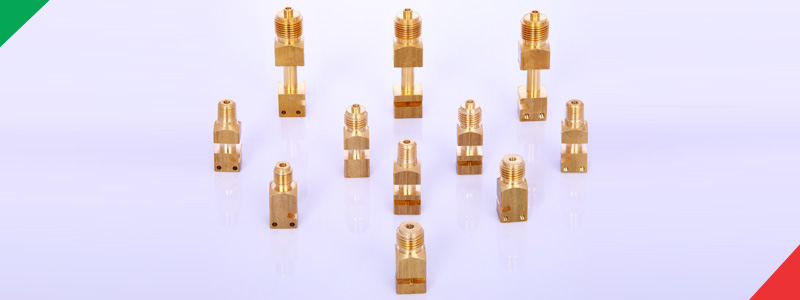Swiss turning and classic CNC (computer numerical control) turning are two distinct methods for fabricating metal machine parts or other raw materials. Machining is a technique to remove the material from a piece of equipment and reshape it to its specified design.
Materials are spun at high speeds and moulded using cutting tools to achieve the desired component with swiss turning and conventional CNC turned components.
This approach has been established for a long time, however, it is currently becoming upgraded owing to new technologies.
Various industries rely on these strategies for developing metal and plastic parts efficiently and precisely.
Small mechanical parts are ubiquitous in applications in the electronics, medical, automotive and aerospace industries.
Whether they are internal microparts for injection pumps, electric probes or implants for surgery, thanks to the precise turning processes of the new generation of Swiss-type lathes, these parts are now lighter, more compressed and more efficient.
But which is the best – Conventional CNC turning or Swiss CNC turning? Read on to know the difference.
What is Conventional CNC Turned components?
CNC machining has a vital role in the industry because of its prevalent use of machines. To achieve a precise level of control, old industrial equipment such as lathes, routers, drills, and cutters are now powered using exclusive computer systems that make CNC turned components in India stand apart from the rest.
These components can run without any breakdown before maintenance is necessary. If there is already a lot of work in production, some changes are necessary as humans can never work like robots.
CNC Conventional Machining
Conventional CNC turning is a process where the bar rotates in a fixed position and the position of the cutting tool is driven by servo-controlled motors in the X and Z axes. This allows high precision movements. Commercial metalworking machines have standard closed-loop controls that provide precision, speed, and stability.
Benefits of Conventional Turning
For short items with big diameters and tight tolerances, conventional turning is the best option. For larger sections made of tough materials, conventional turning is also preferable.
Today, CNC systems are employed for any process that involves a succession of movements and operations. Laser cutting, welding, friction welding, ultrasonic welding, flame and plasma cutting, bending, spinning, punching, nailing, glueing, fabric cutting, stitching, ribbon and fibre placement, routing, pick-and-place (PnP), and sawing are all examples of these processes.
Examples of Conventional CNC Components are:
- Fluid controls
- Castings
- Automotive
- Any piece with a diameter greater than 1.5″
CNC Swiss Machining
Swiss-type machining is the best way to make precision components for medical and defence products like dust cover pins and firing pins for military guns. The diameter of these long, slender components has a tolerance range of 0.0005 inches.
The advancements in science and technology have made Swiss-type machines become the standard for machining inexpensive miniature parts with very high precision and repeatability.
A Swiss-style lathe is made up of many turning machines that feedstock through a guiding bushing.
This means that no matter how long the workpiece is, the OD turning tool may always cut the stock near the bushing, and hence near the point of support.
As it moves, the machine feeds the work out of the spindle and past the tool. Swiss machining is especially useful for long and slender turned parts because of this.
Benefits of swiss CNC turned components
One of the benefits of the Swiss turning method is that the material is supported close to the cutting tools, thanks to a guide bushing through which the bar stock is forced. When you are using a traditional turning process, this stops the bar stock from deflecting.
What makes swiss CNC turned components unique?
- A cylindrical item is often produced by the Swiss-style screw machine that runs on bar stock.
- A 12-foot bar with automated bar loaders that can hold up to 15-20 bars and feed them through the system.
- As the bar is pushed forward through a guide bushing, the tools are machining.
- To complete a mechanic part, a variety of tools and axes are frequently employed.
- Complex designs and pieces can be manufactured to completion on a single machine using Swiss machining.
- Swiss machining can handle small runs of 1,000 pieces to high-volume production.
- Drilling, milling, boring, knurling, turning and a variety of other operations are examples of processes.
Swiss turning is ideal for both long as well as small parts under .125″ diameter.
Some of the examples of Swiss parts are:
- Contacts in connectors
- Watch parts
- Shafts
- Medical implants and devices
- A wide range of aeronautical and electronics connecting components
Which turning process should you use?
Swiss CNC turning is the perfect process for you if you need something with minimal bending or if your project requires a large number of small, cylindrical pieces with exceptionally tight tolerances. Conventional CNC turned components, on the other hand, provide superior repeatability, precision, adaptability, and speed manufacturing.



